or the second year running, we’ve brought back The Honorables as part of our end of the year podcastin’ extravaganza! At the end of every year, after the fires of Best Games Played have raged and smoldered, there are games that didn’t make it to our top ten list — or even entered consideration! — that we nonetheless felt very strongly about. So it’s here on this judicial list that we give those games a chance at glory.
Similarly to Best Games Played, we don’t limit the contended games to those that only came out in 2019. We’re all busy folks, and sometimes you don’t get to a game until a year or two or five later. Does the joy a game brings you matter less if you don’t play right when it hits shelves? Of course not! There’s at least one game on this list that was originally released at the beginning of this console generation.
But unlike BGP, we handle our selection process a little bit differently on The Honorables. Where our top ten podcast is filled with open-ended discussion where we pick and prune a list of dozens of games down to ten, The Honorables comes pre-assorted — a seeded double elimination bracket of Dylan, Alex, Joe, and Nelson’s second most favorite games of the year.
Everyone brings a lot of passion to these discussions. Battles are won, battles are lost, but in the end, we have another selection of great games that represents the Wardcast collective as a whole. So if you haven’t yet, we definitely recommend you check out our Honorables recordings first — both part one and part two — to see how we whittled down twenty-four contenders to these ten games. Once you’ve done that, come back here and check out what our hosts had to say about their personal favorites on this list.
10
Sunset Overdrive
Fun in the sun.
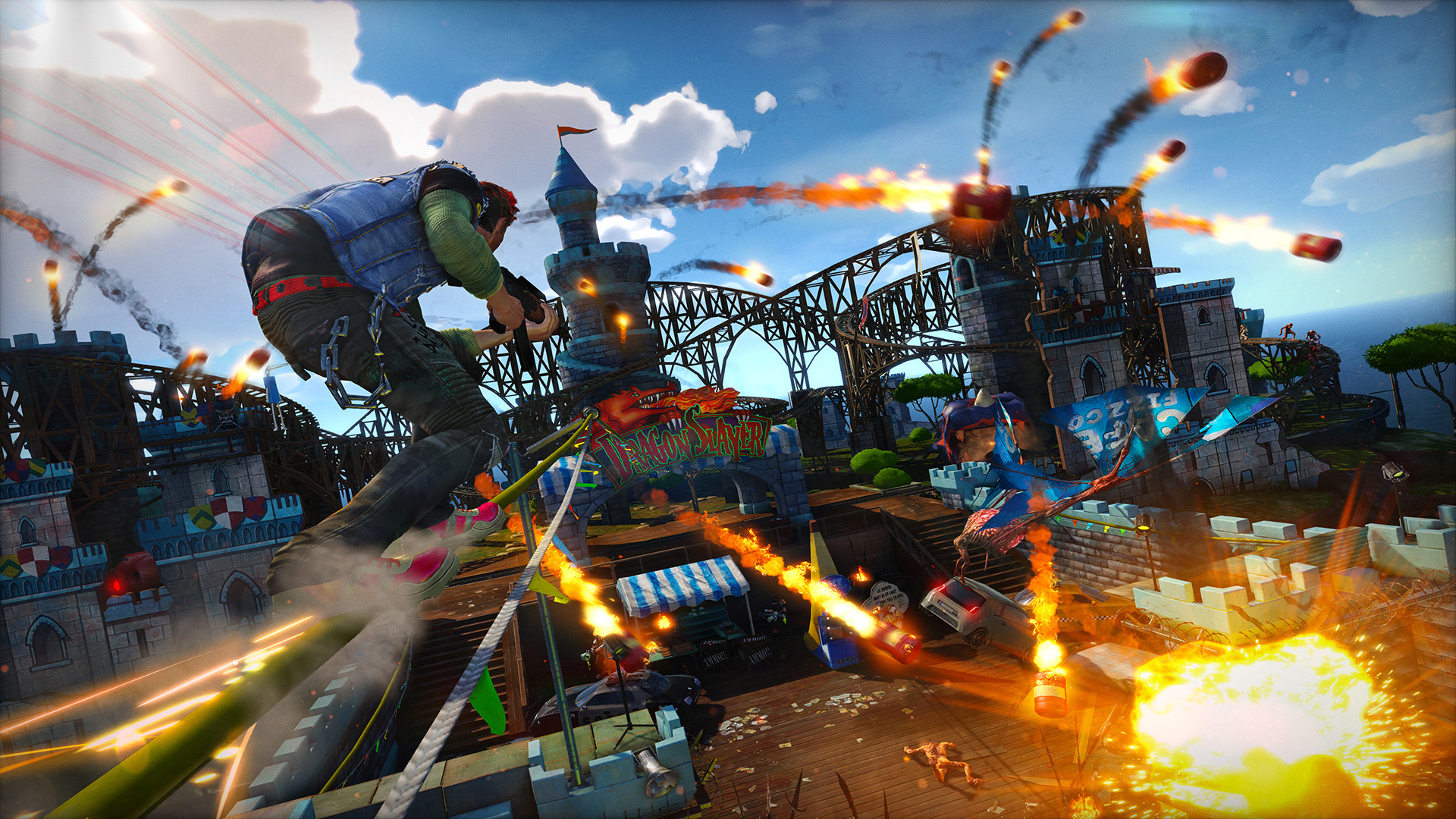
I believe I’ve gone on record as saying that I enjoy games that don’t take themselves seriously. Games that throw the entirety of the fourth wall out for the sake of the enjoyment of the player. Games that know they’re a game and can use that meta knowledge to their advantage. Sunset Overdrive isn’t just one of those games. It is one of the most ridiculous, dumbest, most absurdly fun games I’ve played all year. I mean… this is a game about a mutant apocalypse brought about by people overdosing on an energy drink.
As one of the few survivors in Sunset City, you’re tasked with taking on hordes of OD — short for OverCharge Drinkers, folks who consumed the mutating energy drink — to protect the rest of the humans, solve the corporate conspiracy, and escape the city. Sound like something you’d see in a typical action movie? Sure. Now, add LARPers, Eagle Scout ninjas, and guns — guns that shoot vinyl records, guns that shoot bowling balls, and guns that shoot other guns. Yeah, that’s the kind of ridiculous Sunset Overdrive gets into.
No, the game isn’t perfect. But… damn it, it’s just fun. It’s fun to bounce off of a car, forty feet in the air, and slam the ground with a mariachi guitar while lighting strikes random enemies all around you. It’s fun to have gun descriptions read by an over-enthusiastic narrator. I’ve been waiting to play this game since the first trailer before the original Xbox One launch, and with the amount of fun I had with this? The wait was worth it.
9
Control
The truth is in here.

We all love a good government conspiracy story — the thought that there’s so much more going on below our crowded city streets or behind the dark panes of towering buildings. The notions of urban legends have spread so pervasively through society in the advent of the information age — it’s influenced a number of writers and other imaginative minds to create works like the entirety of the SCP Foundation and Welcome to Night Vale.
Control may not always take full advantage of this daunting set up — the notion of its secret government agency designed to protect normalcy is, by the end of the game, never fully established or defined. It contains weird objects, creatures, and gates to parallel dimensions within its Brutalist concrete walls, but you never quite find any nuance to it all. This may delight some and frustrate others, but what can be almost universally acclaimed is Control’s magnificent approach to high-octane telekinetic firefights.
You play Jesse Faden, a young woman who came to the Federal Bureau of Control looking for answers. She enters the bureau with equanimity, but more immediately finds herself amidst a hostile takeover by entities from a parallel dimension. Wielding the “Service Weapon,” an object of power that grafts itself to a chosen user, taking the form of a weapon specific to its current era. It’s suggested to have been Mjolnir or Excalibur in the far past, but right now it is a revolver, a shotgun, or a rocket launcher as Jesse deems fit. And with it comes an awakening of power within: suddenly she can fly, launch nearby furniture, and punch with the force of a small explosive. These abilities combine to create a combat loop that is tight, responsive, and full of pocket-sized earth shattering power trips.
It helps that every aesthetic niche pushes this to the right amount of extreme, via bass-y sounds and a genuinely outstanding particle effect that ripples through the game world and distorts its very reality. There’s a very slight camera trick that occurs when Jesse pulls back for an attack that rockets her from the air into a target. It’s hard to describe in words, but imagine she’s the rock in a sling shot, and as she’s fired the camera forgets to follow her for a split second before catching up to her — really selling the impact she makes. And if I can give one good reason to play Control, it may just be that.
8
What the Golf?
SUPER. PUTT. SUPER. PUTT.
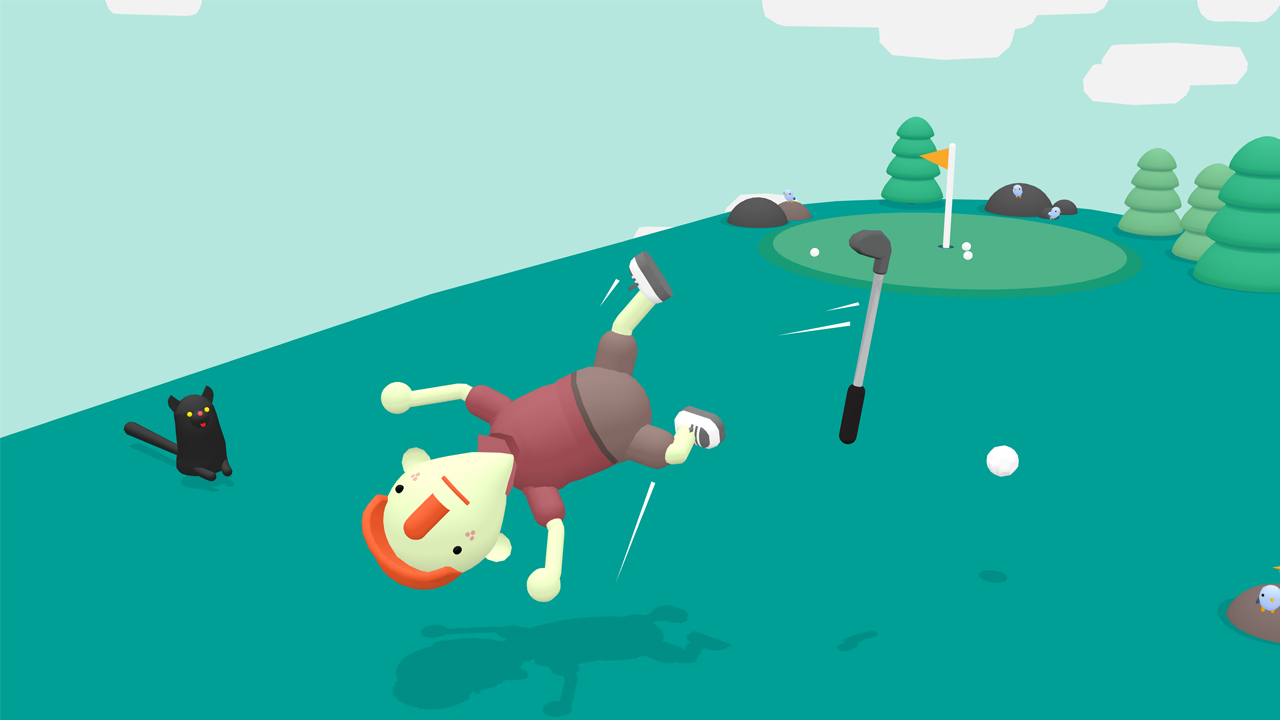
What the Golf? holds a special place in my heart, not least because Austin Walker used it to chastise my, then not fully understood, love of golf games.
No, What the Golf? is special because it takes my love of digital golf and mashes it with unbridled joy, levity, and creativity.
Every level starts with a big, loud proclamation across the screen — “Moving Day!” one shouts at you, a circle wipe revealing an array of objects strewn across a neatly manicured lawn. You possess each object to putt into the back of the moving truck and, with the last one loaded, the truck zooms off. The camera then pulls out to show your old house, and you proceed to putt it down the block, avoiding lawns and moving cars as you go, to arrive at your new address. It’s a silly sequence of events that build on top of one another while you grin the entire time.
Each course hits you with these quick jabs of humor, and What the Golf? isn’t precious about them either — it understands that the half-life of a good visual gag is about 0.3 seconds. The game aims the joke, fires it, and moves on.
One level, you might play as a couch, where slamming yourself into the flagstick flashes “(C)ouch” on the screen. The next level, you might control a mass of golf clubs, all attached at the grip, looking like a giant spiked tree bur as it awkwardly rolls around on the ground. Another level still may have you putting around a flower vase, being careful not to knock it into any obstacle, lest it shatter.
All of this adds up to a suite of wacky miniature golf courses that never make you feel bored. As soon as a gameplay gimmick is close to wearing out its welcome — say, the 2D courses where you use planetoid gravity to swing golf balls around heavenly bodies — the game switches to something else.
This constant refresh cycle keeps you mentally engaged as well as joyously entertained, and it all culminates in a final course that combines a dozen or so of the gimmicks together in a “Best Of”-style challenge.
What the Golf? shows that golf games can be so much more than driving the ball down the green. They can be creative, mesmerizing, and — most importantly — funny.
7
Super Mario Maker 2
Be an artist, with Mario!
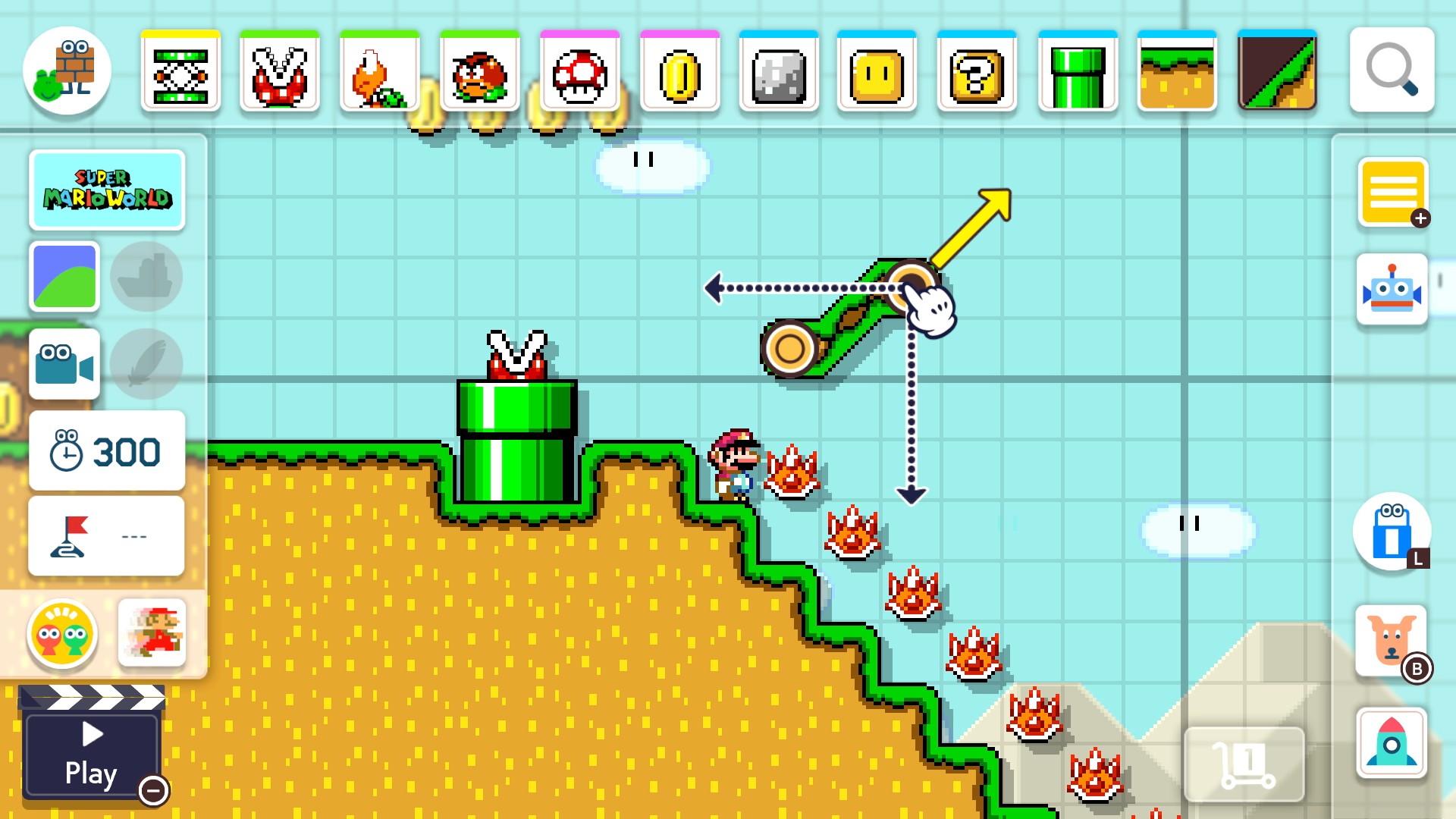
When we started the Wardcast back in 2015, we hadn’t yet created the Best Games Played awards, despite it being a banner year for some truly great games.
Rocket League, Splinter Cell: Blacklist, and Shadow of Mordor are all games I deeply enjoyed in 2015 and would’ve championed if we had thought ahead of time to create such a showcase.
Another game that deserved such recognition: Super Mario Maker.
Mario Maker was such an obvious idea: player-made Mario levels that can be shared, explored, and mastered. The fact that the game paired so perfectly with the Wii U’s tablet and stylus made it seem like the whole console was tailor-made for Mario makery.
Countless hours were spent creating all sorts of levels — puzzle levels, autorun levels, brutally difficult Kaizo levels. With Super Mario Maker 2, that time has come again. The creation suite has been expanded, new game modes have been added, and you can even play with your friends! Well, at least, you can after a patch three months after release.
Sophomore efforts are notoriously tricky, even more so when the freshman debut is something as beloved as the first Mario Maker. Despite the addition of more, Mario Maker 2 seemed to accumulate less: less excitement, less fanfare.
But even in the face of the shortened enthusiasm, Mario Maker is still as great as it’s ever been — a never ending font of creativity. I love checking out the “Hot Courses” tab on the online Course World to see what new creations people have released upon the world, later incorporating their ideas into my own levels: there’s a course that plays like a first person dungeon crawler, a level where you “mind control” a Monty Mole, a level where you play Pong, and so much more.
Hopefully, Nintendo continues to support the game, and with this month’s massive update bringing Link from The Legend of Zelda as well as even more new gizmos and doo-dads, I hope this is a precursor of great things yet to come.
6
You are Jeff Bezos
“If only you could manufacture guillotines this easily.”
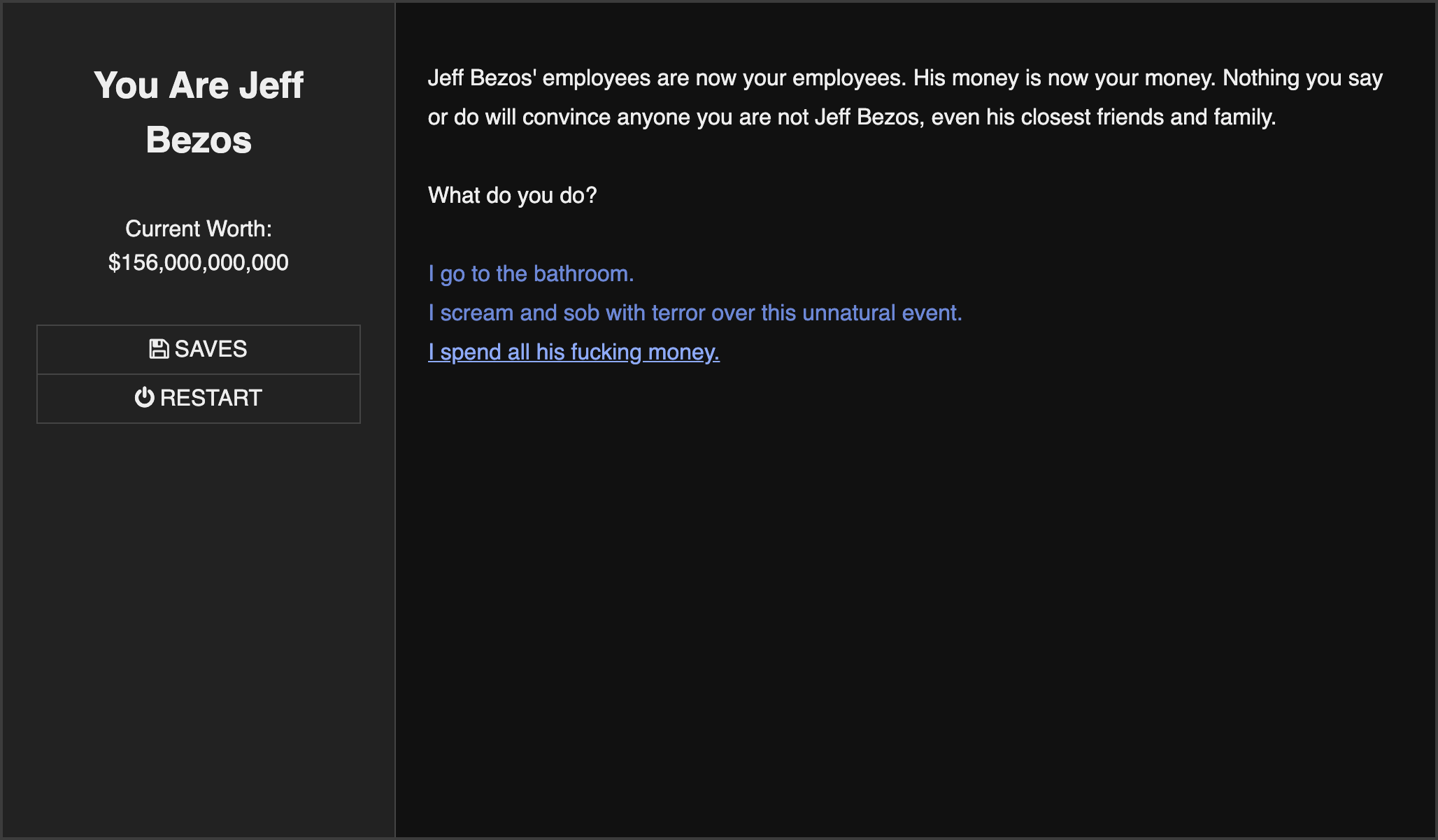
When I was a business student in undergrad, I had an entrepreneurship professor — himself a professed free market capitalist — try to impart a little piece of wisdom to us.
He said, in entrepreneurship, a start-up’s end goal should either be: get acquired or go public, both to the benefit of lining stakeholders’ pockets nicely.
“I just want founders to get paid,” he told us. Since entrepreneurs work so hard to get their fledgling little enterprises into giant, indomitable “disruptors,” why shouldn’t they be entitled to that sweet, sweet payday?
But what’s the upper limit on the value derived from building a company? What’s the ultimate threshold for the blood-sweat-and-tears to cash ratio? Is it a million dollars? Ten million? A hundred million? One billion?
Turns out, late stage capitalism says there is no hard cap. Executives can keep stockpiling more and more wealth to the detriment of their employees, their fellow citizens, and, ultimately, the world.
Which brings me to You Are Jeff Bezos.
You Are Jeff Bezos is a Twine game where you wake up one morning to find yourself in the body of one of the richest people in the world, Mr. Amazon himself. After you come to terms with the fact that you now reside within the subject matter of one of the most sycophantic SNL skits in recent memory, you realize what you must do, which is — and I quote — “spend all his fucking money.”
On the screen resides an ever-present bank total, clocking in at a meager 156 billion dollars. Dialog choices roll out for items you can spend your Jeff Bezo’s money on — repairing Puerto Rico in the wake of Hurricane Maria, actually paying his taxes, even funding one hundred indie games. The price tags for these items seem incomprehensibly large. “Surely,” you think, “a multibillionaire is rich, but they’re not that rich,” but then you decide to spend 20 billion dollars to end homelessness in America and see that it barely even puts a dent in the bank.
You realize what you must do, which is — and I quote — “spend all his fucking money.”
While friends and family try to stop your shopping spree by tying you up and calling for your arrest — not that far off from how much value actual society places on cold, hard cash — you stumble through a madcap adventure of police chases, barista befriendment, and a GoFundMe drive run by Peter Thiel.
For me, a narrative’s loftiest goal is edification — to shake people loose of their preconceived notions and make them consider the world in a different light. You Are Jeff Bezos should put in stark relief the true injustice of wealth inequality. Bill Gates could buy the entirety of the NFL and still maintain his top one percent status, while hundreds of thousands of people in the United States don’t have shelter, health coverage, or other basic human necessities.
So play this game, vote, and tear down the bourgeois however else you can.
5
Warhammer: Vermintide 2
The end of days have come again for the Old World.
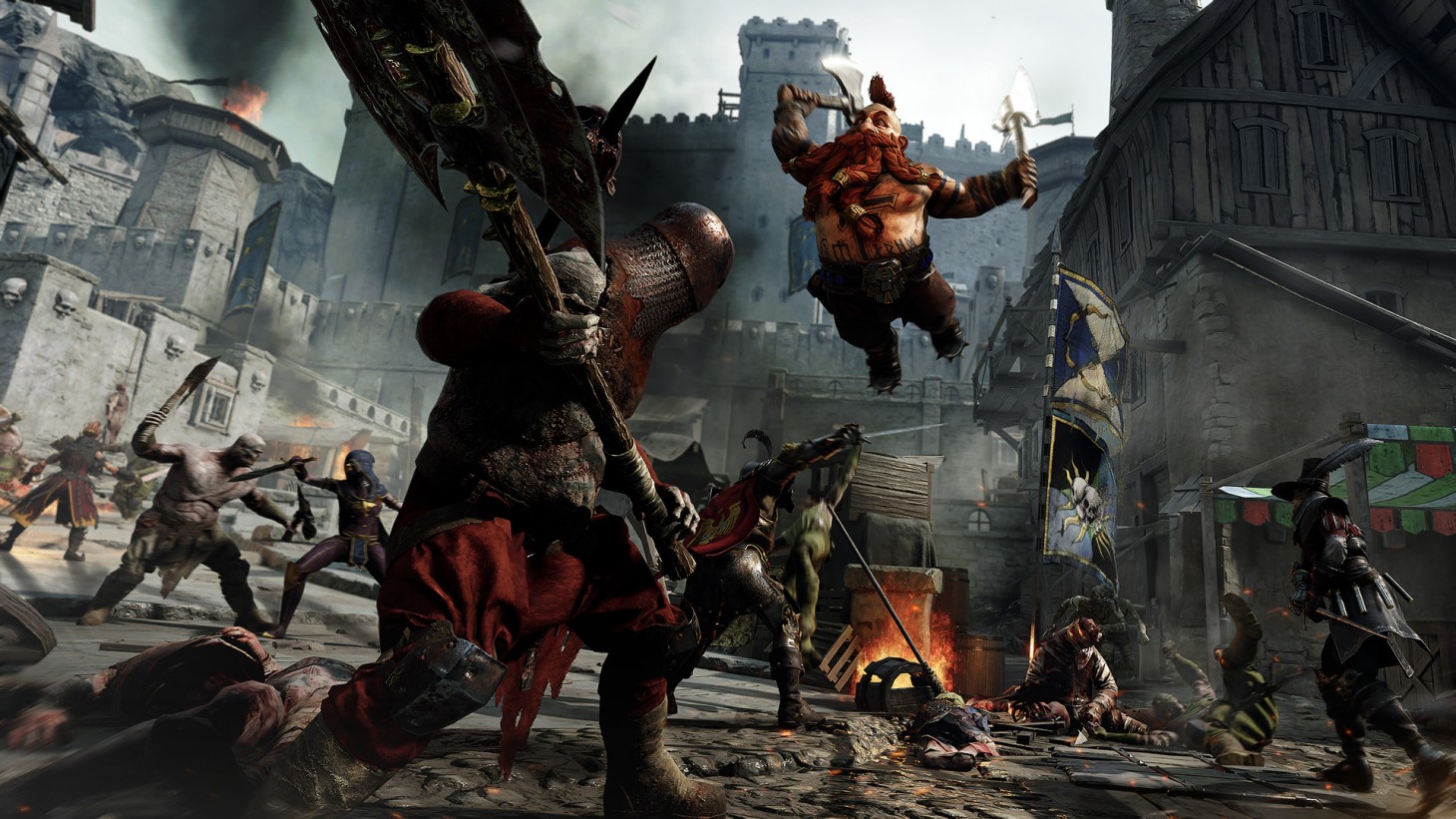
The fantasy world of Warhammer is dead.
Archaon, the unstoppable force of chaos, obliterated the world so that Games Workshop could make way for new Warhammer product lines. But despite the death of the “Old World,” tales are still being told in the face of this canonical apocalypse — the Total War franchise notably has produced hundreds of dollars worth of content for Warhammer Fantasy. But if you’re not looking to spend two hundred bucks to slay armies of skaven ratmen in real-time strategy, you can pay thirty bucks — at the time of writing — to slay armies of skaven ratmen in Warhammer: Vermintide 2.
In Vermintide 2, you join a party of four heroes as they jump into different maps to Left 4 Dead-ify their way through monstrous hordes. Instead of zombies, you fight the aforementioned rats, deformed northmen, and minotaur beastmen. Depending on your character and subclass choice, you have access to small swords, big swords, double swords, spears, hammers, axes, guns, flaming knives, flaming swords, flaming maces, flaming sticks, flaming guns, and more. Each character/subclass combination also possesses different talents you can toggle on and off, and each weapon type possesses its own combat advantages. It’s enough depth to scratch the itch for any min-maxer, but more importantly, it opens up a world of different playstyles to discover your favorite rat-killing methodology.
Once you’ve equipped all the appropriate flaming gear, you can either queue with friends or strangers and jump into a map. The maps, while bleak, are gorgeous with dramatic vistas and lovingly-crafted details, with a ton of variety in space and verticality. Open fields, narrow dungeons, precarious cliffs, walled arenas, dilapidated ruins, giant forests — every map feels unique, and, due to the procedural enemy encounters, you never know when hordes of ratmen or giant bosses will attack, keeping each run feeling fresh. It all adds up to testing players’ teamwork as they push towards a last stand and hold their ground against on onslaught of skaven.
All this to say: it’s fun. It’s fun with friends. It’s fun with strangers. Getting absolutely surrounded by encompassing hordes is fun. Watching your allies get dragged away by scary enemies is fun. Getting sucked up into magical tornados is fun. Watching your loot meter fill up after victory is fun. Opening hundreds of chests is fun. Fun, fun, fun. The fun is elevated especially by those moments of tension where it feels like your party is genuinely screwed.
Vermintide 2 sucked me in and made me care about the doomed Warhammer setting. It’s a quality experience made with smart decisions, like letting players access the downloadable content maps to play with friends without having to purchase them. The character choices aren’t just good variety, they’re also a wealth of fun banter, and the maps and enemy design create memorable, titillating encounters.
If you’re looking for an apocalypse, I highly recommend this one.
4
Brawl Stars
Brawl in the family.
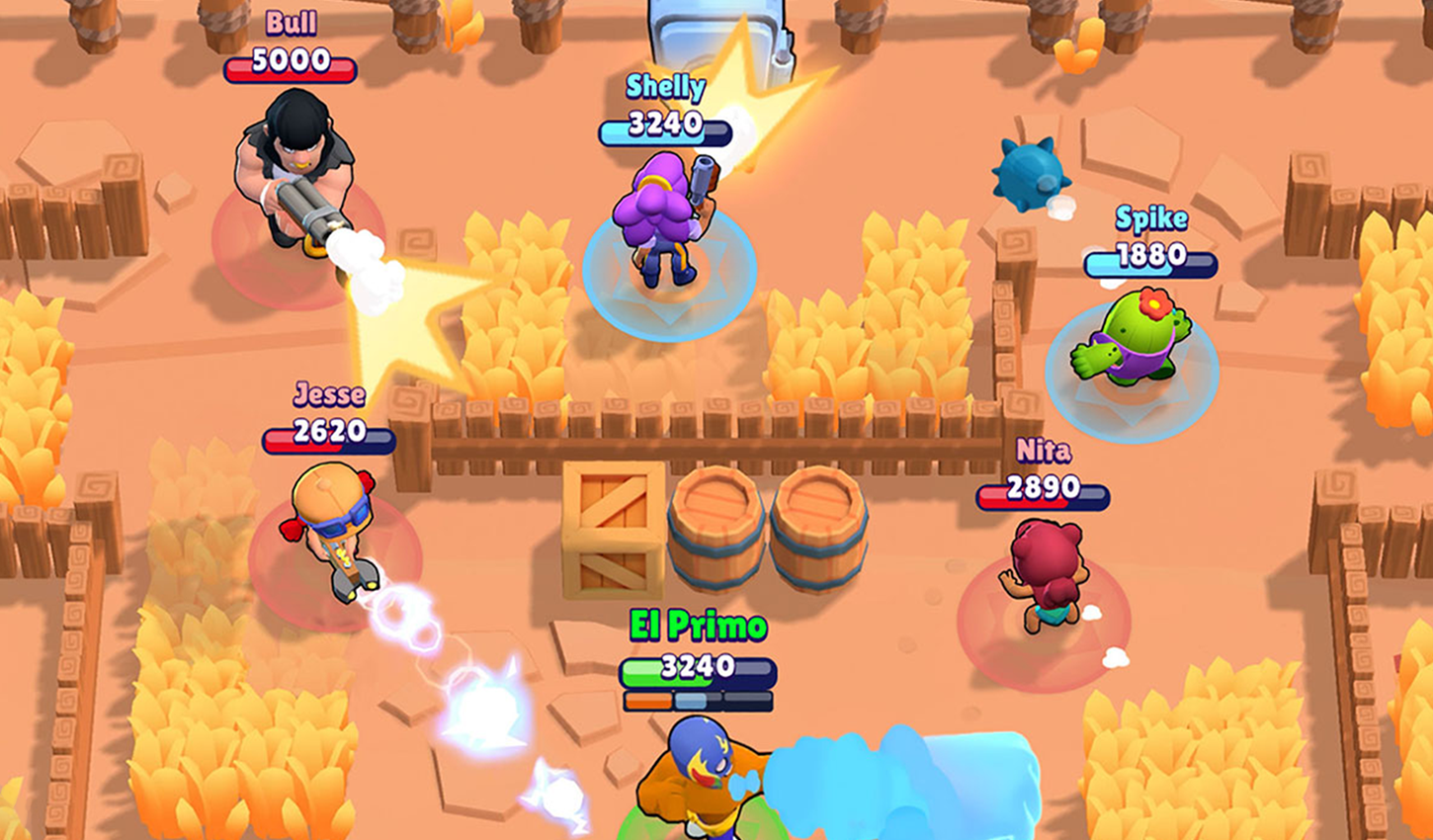
I like a good competitive game. I like fighting games, shooters, and couch-party titles that evoke a sportsmanship within this medium — a drive to improve upon twitchy reflexes and smart, snap decisions — and a community to do it with. For all that, I wondered why such an experience wasn’t available on the one game platform I always have with me: my phone. That is, I wondered that until Brawl Stars came along.
Brawl Stars is such a wonderful chestnut of smart decisions. You’ll see exclamations of “mobile Overwatch clone!” all over the web, but most games that attempt non-casual gameplay on mobile pan out the same: it’s usually a first or third person shooter — or a MOBA — but with huge tap buttons replacing every related keyboard and mouse input, creating an unwieldy cluster of impossible to use inputs on a platform just not built for complexity.
They could be highly polished, I don’t know, but they falter at making competitive play accessible on phones. Brawl Stars fixes all of those complaints, and I won’t be able to look at other mobile titles the same way. This game is just filled with too many forward-thinking, great-feeling decisions.
Decisions like, for starters, making it a top down shooter. Its perspective is not unlike the aforementioned MOBA, though the angle is much steeper, lending itself to the twin-stick feel of classic arcade titles. The twin-stick paradigm translates smoothly to mobile by linking each of the sticks to one of the two halves of the screen, instead of a static predetermined virtual stick that stays locked in one place and is easily missed. You can aim by dragging on the right half of the screen, or you can simply tap it to “quick fire,” trading your shot’s accuracy for a more reflexive and surprising attack.
This game is just filled with too many forward-thinking, great-feeling decisions.
Every character has a primary attack and an ultimate, though the ultimate charges quickly enough that it behaves more like a secondary ability. The kicker is that everyone knows when you have it — and when you’re aiming it, allowing them to prepare countermeasures. The nuance for competitive play here is miles deep, and matches have the strategic depth of something akin to Overwatch, so I guess those comparisons do have some credence. But in true mobile game fashion, Brawl Stars designs its matches so they don’t tend to last more than two or three minutes — they’re quick, decisive, and wildly fun.
I should mention it also looks gorgeous. It comes from a pretty standard Supercell ideal of “22nd century Saturday-morning cartoon,” but the spritz of life and personality the work of Paul Chambers and Co. gives each character is not to be glossed over. You’ve got a living cactus, a crazed pirate captain, an anthropomorphic crow biker gang member, and a luchadore vigilante given super powers via meteor accident. It’s a colorful and entertaining world on those merits alone, but the gameplay makes it all the more worth it.
3
Tetris Effect
It's all connected.
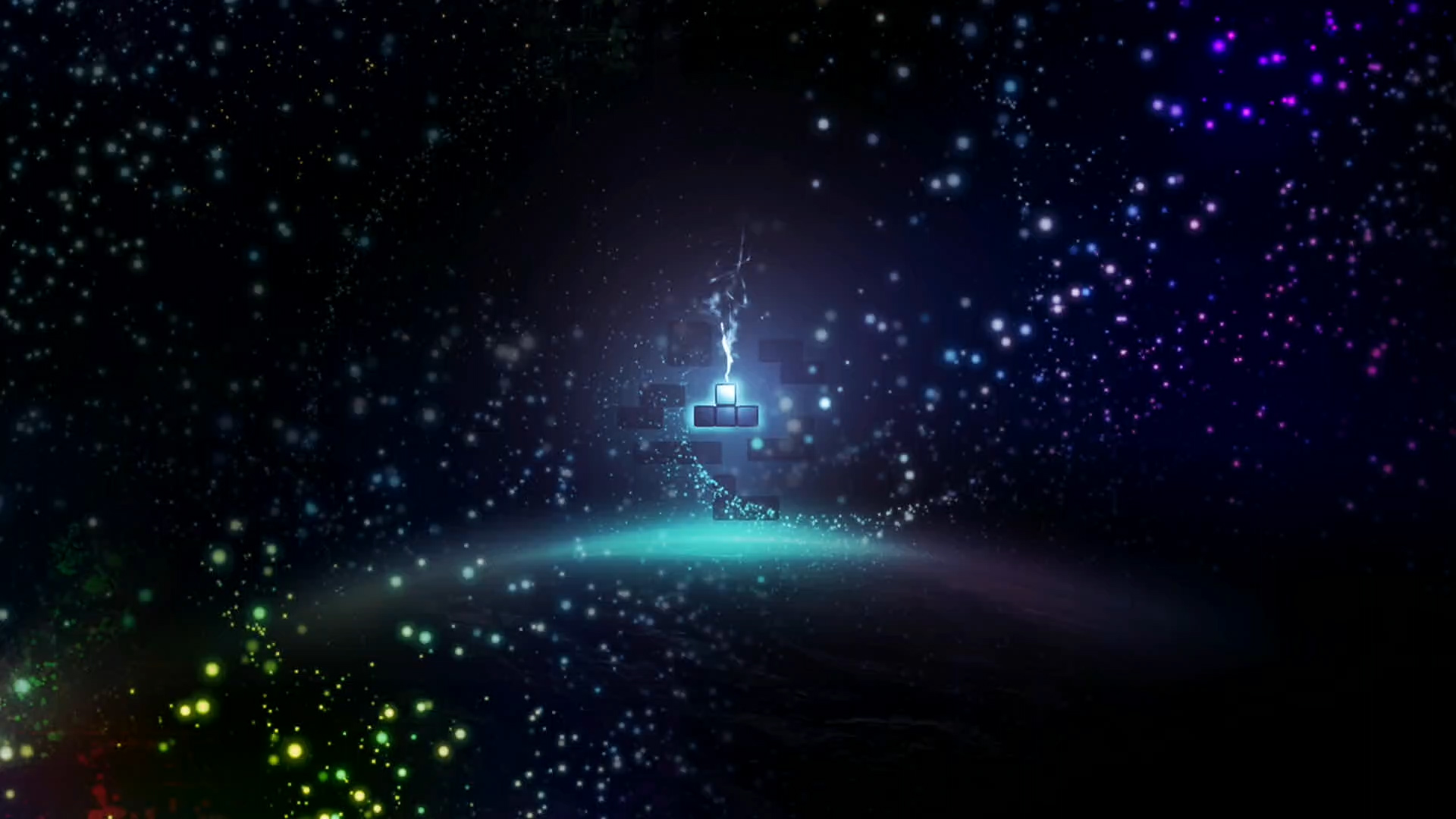
The iconic, if underappreciated, media franchise Tron was built to evoke a connection with our computers — life and depth given to the basic functions served by circuitry and silicon. The way it chose to evoke this connection was via the most interactive medium we had at the time: the burgeoning world of video games. The original Tetris came out two years after Tron’s debut, but it would take another thirty six before we would reach Tron’s vision with Tetris Effect.
These days we are born among computers — technology and video games are a culture, a matter of living, no longer novelties. Movies are filled with scenes generated entirely by complex processes translated to look like real life. Works of art are created with software designed with as much care as what’s put into the art itself.
We spend an ever-increasing amount of time touching screens — our reactive, living programs — so what happens when these devices decide to reach out and touch back? Tetris Effect bakes into every one of its cracks the ethos behind the scientific study for which it earns its name: to have a program consume your thoughts. It’s suddenly so easy to live within the cozy ones and zeroes that make up our lives.
Tetris Effect achieves this through its dazzling, dynamic soundtrack and a vibrant light show that accompanies its simple puzzle façade. The music it plays, plays with you — your inputs delight the sprites who live behind the shelf of pieces you’re slowly building, and they return a drum beat to echo your movements. Suddenly you are a composer. The soundtrack is yours, you built it. These sprites, they are your friends, and they love your music. They love to dance to it. You twitch your fingers and thumbs to the beats and feel your spirit soar with them, faster and faster, until the level completes. You’ll find yourself dreaming about your friends in the program, you’ll dream about them dancing, and you may tell yourself you’ll return to them shortly… longing for the program’s warm embrace and the soothing dreamscape it lives in.
2
Dragon Ball FighterZ
“I could go one step farther if I wanted to.”
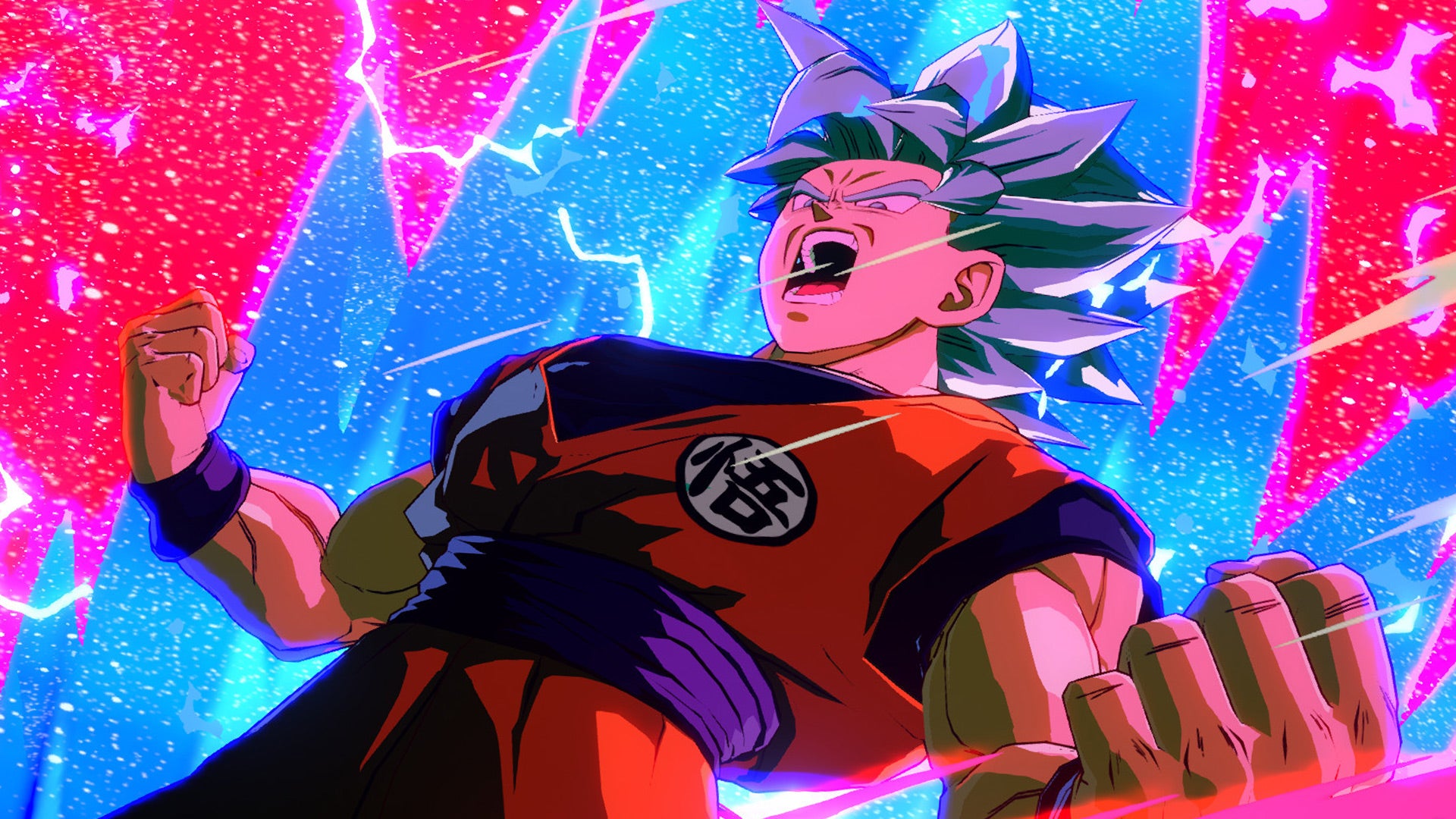
Fighting games are my absolute favorite genre of game that I will never be good at. The simplicity of the concept — beat the other person — contrasted with the complexity of the execution — moves ranging from Geese Howard’s Raging Storm to Saki’s Extend Force Garbh Dagda — is such a fascinating combination that I keep reaching for the controller every time I see something that stands out. ArcSystem Works has a habit of standing out, and Dragon Ball FighterZ is no exception.
Like many of you reading this, I grew up in the height of Dragon Ball Z hype. Many a T-shirt was worn that had an assortment of Z-Fighters on the back and a logo on the front. I ran home to catch the most recent episode of a raven-haired man yelling for a prolonged period of time until he became a platinum blonde-haired man. I stared, eyes wide open, at the television screen as characters flew at blinding speeds, throwing punches or energy blasts that can destroy planets. This game feels like participating in the best of those fights.
With only a few accessible button inputs, you can master ground and aerial combat the same way Goku or Vegeta did. But ArcSys did something worth equal praise, they made the action easy to follow and exciting to watch. Whether it’s thanks to the masterful taps into nostalgia or just the fact that the game looks damn good, the team behind this game were able to craft an experience so jaw-dropping and fueled with hype that its EVO debut in 2018 drew the most viewers of any EVO main event, ever. It didn’t even close out the show. The fighting game pantheon has been ready for a new name to be added to it, and Dragon Ball FighterZ — alongside its best player, SonicFox — has rightfully claimed its throne.
1
Untitled Goose Game
Blame it on the goose.
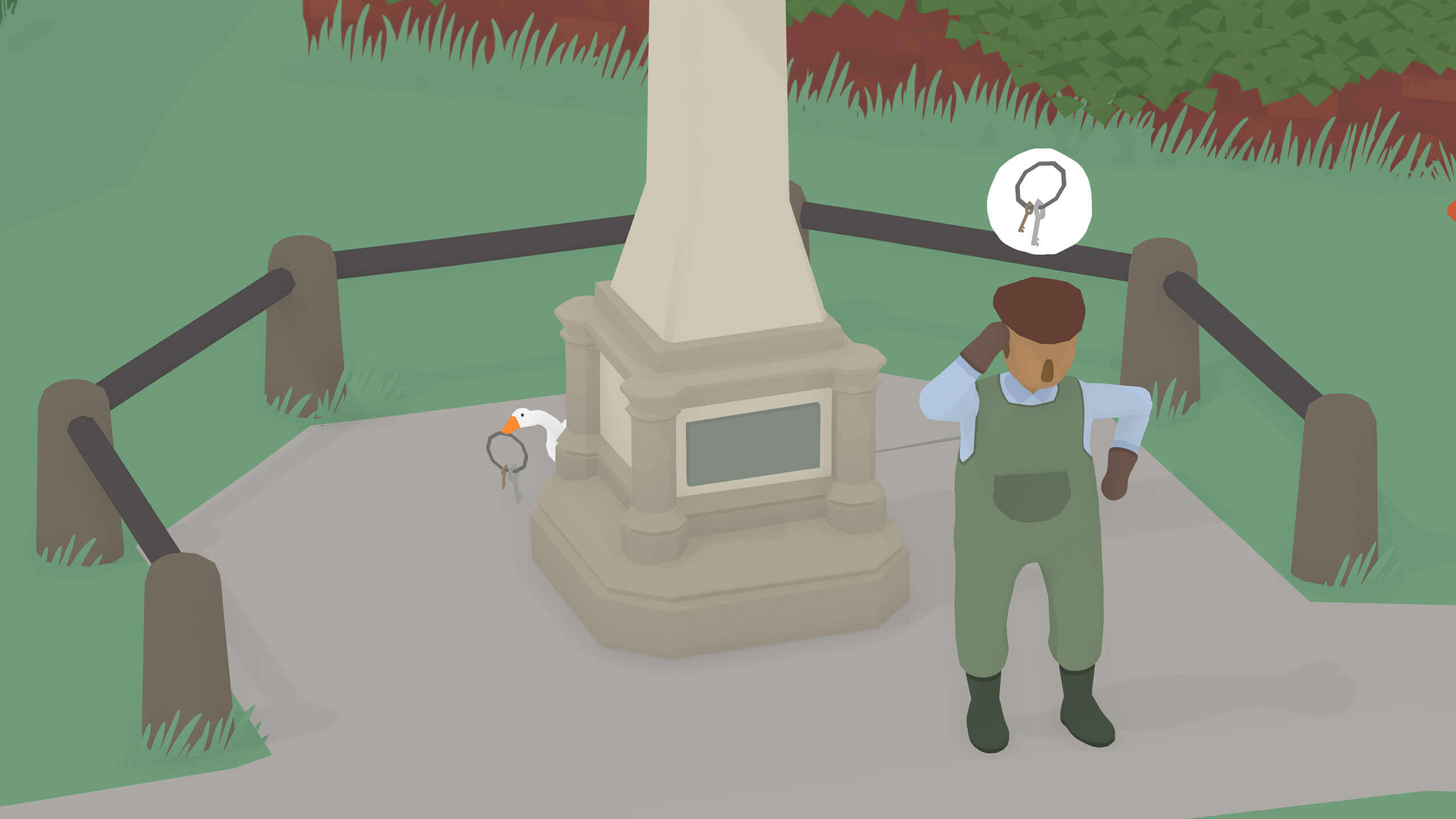
The objective of Untitled Goose Game is quite simple: taking control of the un-titular goose, you honk, strut, and flex your wings around town, nabbing and dragging objects about, causing chaos and destruction in your wake.
You’re given a simple list of tasks in every new area. To begin with: you’re having a picnic! And your picnic needs food, entertainment, and accompanying accoutrements. Your search for such items quickly puts you in conflict with a nearby elderly gardener, who won’t donate his delicious produce and other possessions to your wonderful outdoor spread. Thus begins an invitation to torment this poor man with your adorable honking as you rob him blind. After claiming the gardener’s modest crop, stealing his radio, and hitting him with a classic rake pratfall, you progress deeper into the town, but not before one last prank to steal his keys and lock him out of his own garden. “Goose justice,’’ I declared aloud to myself, ignoring the sinister implications of such a system of governance.
Each new segment of town offers a new playground to master and new foes to vex. You gain a fresh set of objectives on your todo list, as well as a number of items on a second, secret list. Step outside of the known goals to start making trouble of your own, and you’ll often find that the developers have planned for the kind of goose you were destined to be, as the secret list appears with a new goal scratched off. The structure of the game is made to encourage exploration for the sake of pranks, unfettered by unnecessary complexity. The player is rewarded with a sense of completion and progress as the gameplay compels them to continue doing whatever grabs their attention next.
You won’t find any back-breaking challenges, but inversely, not every objective is a cakewalk. The game sticks the landing with just enough demand of your mental faculties for these puzzles to make its simple premise shine. For all the modesty of its design, Untitled Goose Game is one of the most delightful experiences of the year.



